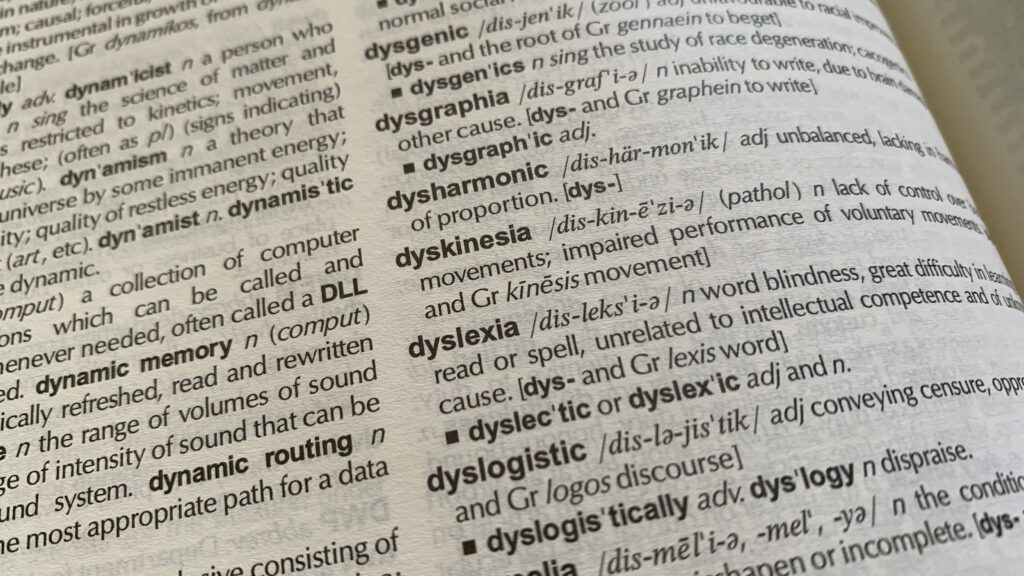What Is Dyslexia ? Causes, Symptoms, and Effective Management Strategies

Understanding Dyslexia: A Comprehensive Guide
What is Dyslexia?
Dyslexia is a type of learning difficulty that affects reading and language processing, making tasks like reading and writing more challenging. This occurs due to variations in how the brain interprets written language. Generally identified during childhood, this condition is typically lifelong and often referred to as “developmental reading disorder.”
Dyslexia falls under the category of “specific learning disorders,” which includes three primary subtypes:
- Reading difficulties.
- Writing challenges.
- Mathematical learning issues.
How Language Processing is Affected by Dyslexia
Learning to read starts with understanding spoken words. As children develop, they learn to form sounds that evolve into words, phrases, and sentences. Reading involves linking these sounds to written symbols, like letters.
Dyslexia disrupts this process by interfering with the brain’s ability to decode written text. Those affected often struggle with breaking down words into sounds and connecting letters to these sounds, leading to challenges with reading comprehension and fluency. This can result in:
- Slower reading speeds due to difficulties in word processing.
- Challenges with writing and spelling.
- Issues with storing and recalling words and their meanings.
- Trouble forming coherent sentences, particularly when expressing complex ideas.
Prevalence of Dyslexia
While not extremely common, this learning disorder is prevalent enough to be widely recognized. Experts estimate that around 7% of the global population experiences reading challenges related to this condition, affecting people of all genders and ethnicities equally.
However, many individuals might experience milder symptoms that do not lead to a formal diagnosis. When including those with undiagnosed symptoms, this condition could potentially affect up to 20% of people worldwide.
Symptoms and Causes
What Causes Dyslexia?
The exact cause of dyslexia remains unclear, but several factors are believed to contribute:
-
Genetics: This learning difficulty is often hereditary, running in families. If a parent has reading challenges, their child has a 30% to 50% chance of inheriting it. Additionally, genetic conditions like Down syndrome can increase the likelihood of developing reading difficulties.
-
Brain Development and Function: Dyslexia is associated with neurodivergence, meaning the brain develops or functions differently. Research indicates that people with this condition have distinct differences in brain structure, function, and chemistry.
-
Developmental Disruptions: Factors such as infections, exposure to toxins, and other events during fetal development can increase the risk of developing reading difficulties later in life.
Risk Factors
Several factors can increase the likelihood of developing reading challenges, including:
-
Toxic Exposures: Pollution, especially exposure to heavy metals like lead, nicotine, and certain flame retardants, can raise the risk of developing this condition.
-
Limited Access to Reading Materials: Children in environments where reading is not encouraged or where books are scarce may be more prone to reading difficulties.
-
Educational Environment: A lack of support in educational settings can also contribute to the development of dyslexia.
Signs and Symptoms
As children grow, this condition may manifest through:
- Difficulty spelling simple words.
- Trouble learning the names of letters.
- Confusion between letters with similar shapes, such as “d” and “b” or “p” and “q.”
- Challenges with rhyming.
- Reluctance to read aloud in class.
- Difficulty sounding out new words.
- Trouble associating sounds with letters or parts of words.
- Mixing up the position of sounds within words.
Experiencing one or more of these symptoms does not necessarily indicate dyslexia. However, if a child struggles with basic reading skills, it may be worth seeking screening and testing for this condition.
Levels of Severity
- Mild: The individual can compensate or work around difficulties with the right support.
- Moderate: Significant difficulties that require specialized instruction and interventions.
- Severe: Persistent challenges despite interventions and accommodations.
Diagnosis and Testing
How is Dyslexia Diagnosed?
Although dyslexia originates in the brain, no blood tests or lab screenings can detect it. Diagnosis involves a thorough evaluation and testing of various skills related to reading and language processing, including:
- Decoding unfamiliar words.
- Oral language abilities.
- Reading fluency and comprehension.
- Spelling and vocabulary.
- Word recognition.
When to Test for Dyslexia
Early diagnosis is crucial for learning disabilities. Testing a child as soon as reading problems become apparent—often before third grade—can lead to earlier intervention and better outcomes.
Parents should work with their child’s school and consider seeking an evaluation from a certified educational psychologist if learning difficulties are suspected.
Management and Treatment
Treatment Options for Dyslexia
Currently, there are no medications specifically for treating dyslexia. However, educational interventions can be highly effective. Children with this condition often benefit from working with specialists who teach new reading strategies and skills. Schools may also slow down lessons to give affected students more time to absorb the material.
Supporting a Child with Dyslexia
Parents can play a vital role in helping their child manage dyslexia by:
- Spending time reading aloud with their child to reinforce reading skills.
- Providing patience, encouragement, and emotional support, as this condition is not within the child’s control.
- Advocating for their child by working with the school to develop an Individualized Education Plan (IEP), which sets personalized goals and accommodations.
Is Dyslexia in Adults Treatable?
Yes, adults with this condition can benefit from treatment. There are numerous programs and tools designed to help individuals of all ages manage reading-related challenges.
Prevention
Can Dyslexia Be Prevented?
While dyslexia cannot be prevented, it can be effectively managed with appropriate strategies. Parents and educators should:
- Monitor for early signs of reading difficulties and consult with healthcare providers if concerns arise.
- Collaborate with schools to create individualized education plans.
- Support the mental health of children with learning challenges, addressing issues like anxiety that may arise from their condition.
Outlook and Prognosis
What is the Long-Term Outlook?
Dyslexia often becomes noticeable when children begin learning to read, though it can go undiagnosed. Without early intervention, children may struggle with reading throughout their school years and into adulthood.
Identifying dyslexia early, preferably by second grade, allows children more time to develop alternative learning strategies. Early support can prevent the negative impacts on self-esteem and mental health that often accompany undiagnosed dyslexia.
Living with Dyslexia
Contrary to some misconceptions, this condition is not a disease, nor does it indicate lower intelligence. Research shows that there is no link between intelligence and reading difficulties. Many people with dyslexia have achieved great success in various fields.
Living with dyslexia means recognizing that reading is more challenging, not impossible. With the right techniques and support, individuals with reading difficulties can excel in their chosen paths.
Can You Be Successful with Dyslexia?
Absolutely. Despite the challenges, many successful individuals have overcome dyslexia. Some notable examples include:
- Jennifer Aniston (actor, producer)
- Richard Branson (entrepreneur)
- Cher (singer)
- Anderson Cooper (journalist)
- Tom Cruise (actor)
- Amanda Gorman (poet)
- Selma Hayek (actor, director)
- Tom Holland (actor)
- Earvin “Magic” Johnson (athlete)
- Keanu Reeves (actor, philanthropist, publisher)
- Octavia Spencer (actor, author)
- Steven Spielberg (director)
- Tim Tebow (athlete)
- Henry Winkler (actor)
Additional Common Questions
Is Dyslexia a Form of Autism?
No, dyslexia and autism are separate conditions. While both are neurodevelopmental disorders, they are distinct and independent of one another. It is possible to have both conditions simultaneously, but one does not cause the other.
Is Dyslexia Always a Learning Disability?
Not necessarily. While developmental dyslexia is the most common form and is considered a learning disability, acquired dyslexia can develop later in life due to brain injury or illness. This form is less common and typically results from damage to the brain.
Is Dyslexia a Visual Problem?
Dyslexia can sometimes affect how individuals perceive letters, causing them to appear flipped or rotated. However, not everyone with this condition experiences these visual symptoms, and it primarily affects language processing rather than vision.
A Note on Living with Dyslexia
Living with dyslexia can be challenging, especially for children who may not understand why reading is difficult for them. It’s essential to remember that this condition is common and does not reflect a lack of intelligence or motivation. With the right support, individuals with dyslexia can overcome challenges and achieve their goals.
If you suspect your child has dyslexia, seek help from healthcare providers, educators, and specialists to ensure they receive the support they need to succeed.

